You Cannot Drown In Quick Sand!
You cannot drown in Quick Sand!
No! Seriously. You cannot.
But I saw it in the movies or in the cartoon (C’mon bro, cartoon?). The gimmick that movies bring in, phew! They sometime just butcher the science out of things for entertainment.
What is Quick Sand?
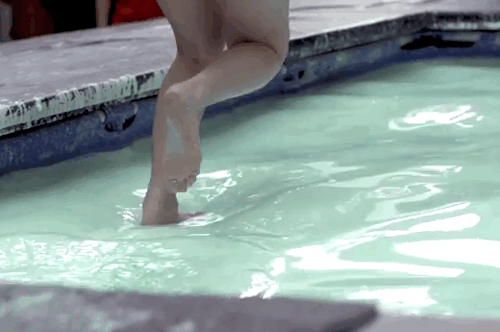
Remember Oobleck, the non- newtonian fluid that hardens on the application of force?
Well, Quick Sand ( also a non-newtonian fluid ) liqueifies on the application of force.

Why you can’t sink?
Quicksand itself is harmless: a human or animal is unlikely to sink entirely into quicksand at all due to the higher density of the fluid ( It has twice the density of human )

It’s the same reason why a ship although made up of steel, yet stays afloat at sea. “The heavier the fluid, the better things float.”
But for the ship to sink it has to push aside some water, which has nowhere to go but up. So it’s a question: does the ship ‘want’ to sink more than the water ‘wants’ not to rise?
It turns out that just depends on whether the ship weighs more or less than the amount of water that would fill the same space. Real ships have lots of air inside, so they weigh less than the same volume of water, so they float.
Getting out of it albeit, is a real pain.
That being said, it is no joke that people have lost their lives in Quicksand. But the rationale for their death is often misattributed.

It’s not the quicksand that will kill you, but the sunlight, dehydration, carnivores, omnivores, hypothermia or tides that will.

It takes a feat of strength to get out of one though.
A study published in Nature found that the force needed to pull your foot out of quicksand at a speed of one centimentre per second would be equivalent to lifting a medium-sized car (in air).
So,How do you get out of it?
Well, who would be a better person to explain it than Bear Grylls himself.

Getting out of a Quicksand with Bear Grylls.
More Posts from Engineeringtrivia-blog and Others

Dawn O'Mara sitting on the edge of the front cockpit of a de Havilland DH82 Tiger Moth biplane, circa 1953.
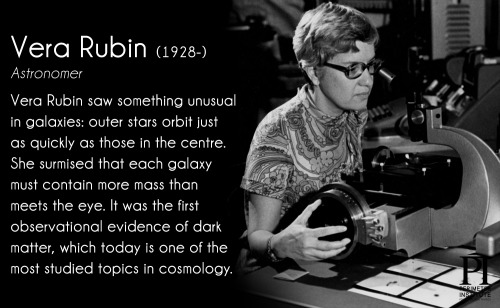
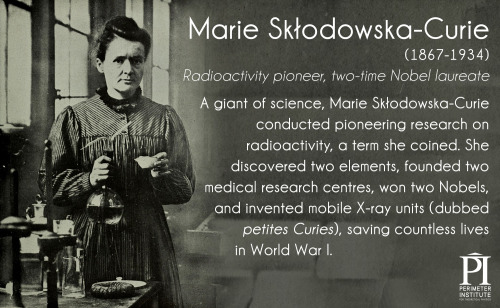
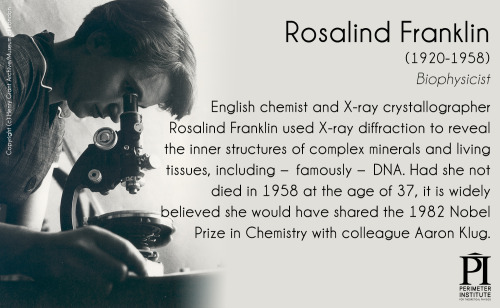

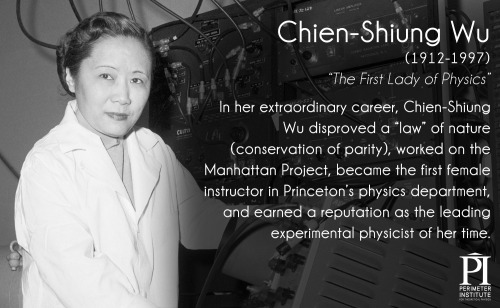
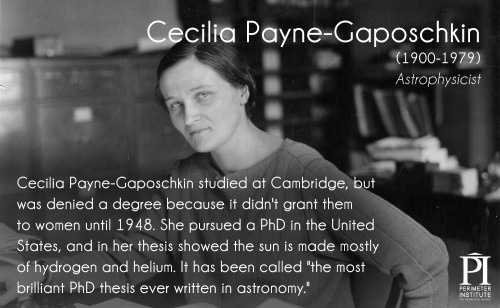
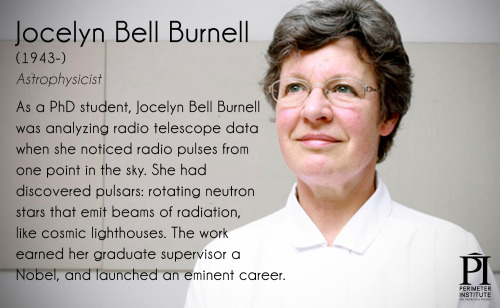
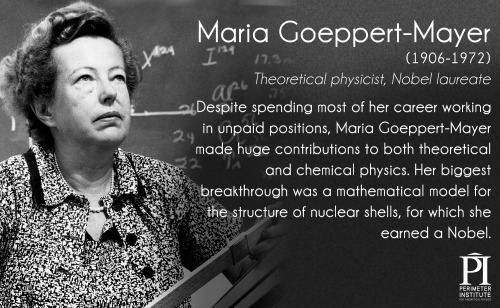
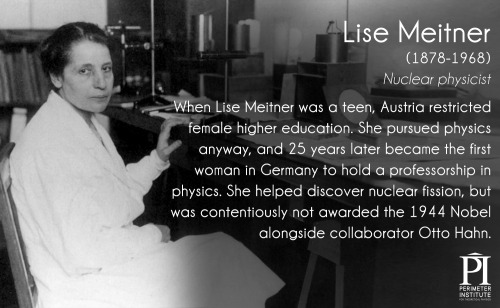
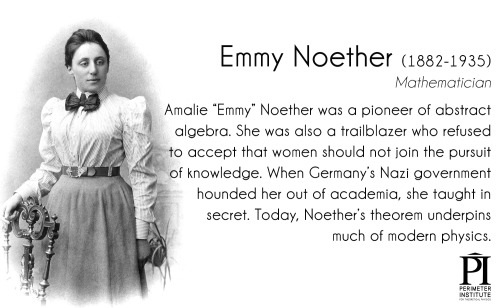
These 17 Women Changed The Face Of Physics
Click through to read the rest.
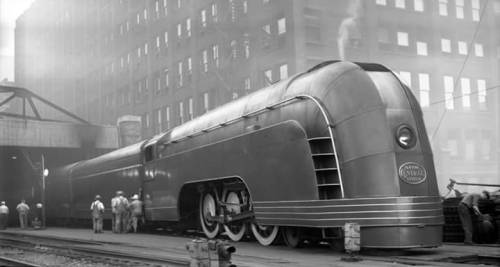
One of New York Central’s “Mercury” engines in Chicago, 1936.


F1 is more than just racing, it is an engineering battle. In this gif you can see the absolute control of wing tip vortices generated from the front wing. This is just an example to show the extreme aerodynamics that these vehicles are engineered for.
Have a great day!
* What are wing tip vortices ?
** Smoke angels and wing tip vortices

Nikola Tesla Won 8 Nobel Prizes For His Work And Discoveries. No He Didn’t. These People Did Instead.
Wilhelm Conrad Röntgen, Physics, 1901: Wilhelm Roentgan was awarded the first Nobel Prize in physics for his discovery of X-Rays on November 8, 1895. Not many know this but Tesla was working with X-Rays prior to Roentgen in 1892, but used the term “radiant matter” instead. He conducted numerous experiments and some of the first imaging, which he called “shadowgraphs,” using these unknown rays in his laboratory before its destruction by fire on March 13, 1895. Tesla was also the first to warn the scientific world on the harms of these rays if not used properly.
Marie Curie, Pierre Curie and Antoine Henri Becquerel, Physics/Chemistry, 1903/1911: The three shared the 1903 Nobel Prize in Physics for their discovery and work on radioactivity in 1898. Madame Curie won the 1911 Nobel Prize in Chemistry for her discovery of radium and polonium, also in 1898. Tesla discovered radioactivity in experiments with X-Rays in 1896, and published many articles on the subject in scientific periodicals prior to the three.
Joseph John Thomson, Physics, 1906: Thomson was awarded the Nobel Prize for his discovery of the electron in 1897. Tesla originally called electrons “matter not further decomposable” in his experiments with radiant energy in 1896, but his finding of the electron goes back to when he and Thomson had a back and forth debate in 1891 about experiments with alternating currents of high frequency. Tesla claimed that his experiments proved the existence of charged particles, or “small charged balls.” Thomson denied Tesla’s claim of verifying these particles with his vacuum tubes until witnessing Tesla’s experiments and demonstrations given in a lecture before the Institute of Electrical Engineers at London in 1892. Thomson then adapted to Tesla’s methods and was able to create equipment which allowed him to produce the required high frequencies to investigate and establish his electron discovery.
Guglielmo Marconi and Karl Ferdinand Braun, Physics, 1909: Both shared the Nobel Prize for their work and development of radio. Marconi is known for proving radio transmission by sending a radio signal in Italy in 1895, but it is a fact that he used Tesla’s work to establish his discovery. Tesla invented the “Tesla Coil” in 1891, which radio relies on, and the inventor proved radio transmission in lectures given throughout 1893, sending electromagnetic waves to light wireless lamps. Tesla filed his own basic radio patent applications in 1897, and were granted in 1900. Marconi’s first patent application in the U.S. was filed on November 10, 1900, but was turned down. Marconi’s revised applications over the next three years were repeatedly rejected because of the priority of Tesla and other inventors. After Tesla’s death in 1943, the U.S. Supreme Court made Marconi’s patents invalid and recognized Tesla as the true inventor of radio.
Charles Glover Barkla, Physics, 1917: Barkla was awarded the prize for his work with Rontgen radiation and the characteristics of these X-rays and their secondary elements and effects. He was educated by J. J. Thomson. Again, Tesla worked with and explained these radiations in full detail throughout the late 1890s, showing that the source of X-rays was the site of first impact of electrons within the bulbs. He even investigated reflected X-rays and their characteristics such as Barkla.
Albert Einstein, Physics, 1921: Einstein was awarded the prize for his theoretical theories which are still praised today, and also his discovery of the law of the photoelectric effect (I have many other post that show Tesla’s fair arguments against Einstein’s theories so I will only dwell on the photoelectric effect). Einstein first postulated that light has a nature of both waves and particles in 1905. This lead to the development of “photons,” or photo electrons, which gave light a wave-particle duality. Now it must be noted that Nikola Tesla wasn’t just a theoretical physicist like Einstein, but was an experimental physicist as well. In 1896, Nikola Tesla was the first to promulgate that energy had both particle-like and wavelike properties in experiments with radiant energy. He set up targets to shoot his cathode rays at which upon reflection, projected particles, or vibrations of extremely high frequencies. Instead of taking the particle-wave duality route, he proposed that they were indeed vibrations, or basically sound waves in the ether. Nikola Tesla preceded Einstein by 4 years on the photoelectric effect publishing a patent titled “Apparatus of the Utilization of Radiant Energy.” filed in 1901, based off his experiments with radiant energy. He had a far better understanding on the matter than Einstein had, because he actually developed experimentations to prove his theories.
James Chadwick, Physics, 1935: Awarded the prize for his discovery of the neutron in 1932. Tesla’s discovery of neutrons goes back to his work with cosmic rays, again in 1896, which are mentioned in the next bit. He investigated and discovered that cosmic rays shower down on us 24/7, and that they are small particles which carry so small a charge that we are justified in calling them neutrons. He measured some neutrons from distance stars, like Antares, which traveled at velocities exceeding that of light. Tesla succeeded in developing a motive device that operated off these cosmic rays.
Victor Franz Hess, Physics, 1936: Hess won the Prize for his discovery of the cosmic rays in 1919. Tesla predated him 23 years publishing a treatise in an electrical review on cosmic rays in 1896. Tesla’s knowledge on the matter surpasses even today’s understanding of cosmic rays.
If this isn’t proof enough that Nikola Tesla got shit on, then I will add that Tesla definitely should have won the Nobel Prize for being the first person to invent the commutatorless alternating current induction motor (a huge part of the electrical power system we still use today), for his inventions and work with light bulbs, radar, for his invention of remote control, and most importantly for demonstrating the transmission of electrical energy/power without wires. Ahead of his time is an understatement.

charles babbage: father of the computer (1970)
Take a Virtual Tour of NASA
Welcome to NASA! Today, we’re taking you behind-the-scenes for a virtual tour looking at our cutting-edge work and humanity’s destiny in deep space!

Starting at 1:30 p.m., we will host a series of Facebook Live events from each of our 10 field centers across the country. Take a look at where we’ll be taking you…
Glenn Research Center 1:30 p.m. EDT

Our Glenn Research Center in Cleveland, OH will host a tour of its Electric Propulsion Lab. This lab is where we test solar propulsion technologies that are critical to powering spacecraft for our deep-space missions. The Electric Propulsion Laboratory houses two huge vacuum chambers that simulate the space environment.
Marshall Space Flight Center 1:50 p.m. EDT

Our Marshall Space Flight Center in Huntsville, AL will host a tour from a Marshall test stand where structural loads testing is performed on parts of our Space Launch System rocket. Once built, this will be the world’s most powerful rocket and will launch humans farther into space than ever before.
Stennis Space Center 2:10 p.m. EDT

Our Stennis Space Center in Bay St. Louis, MS will take viewers on a tour of their test stands to learn about rocket engine testing from their Test Control Center.
Armstrong Flight Research Center 2:30 p.m. EDT

Our Armstrong Flight Research Center in Edwards, CA will host a tour from their aircraft hangar and Simulator Lab where viewers can learn about our X-Planes program. What’s an X-Plane? They are a variety of flight demonstration vehicles that are used to test advanced technologies and revolutionary designs.
Johnson Space Center 2:50 p.m. EDT

Our Johnson Space Center in Houston, TX will take viewers on a virtual exploration trip through the mockups of the International Space Station and inside our deep-space exploration vehicle, the Orion spacecraft!
Ames Research Center 3:10 p.m. EDT

Our Ames Research Center in California’s Silicon Valley will bring viewers into its Arc Jet Facility, a plasma wind tunnel used to simulate the extreme heat of spacecraft atmospheric entry.
Kennedy Space Center 3:30 p.m. EDT

Our Kennedy Space Center in Florida will bring viewers inside the Vehicle Assembly Building to learn about how we’re preparing for the first launch of America’s next big rocket, the Space Launch System (SLS) rocket.
Langley Research Center 3:50 p.m. EDT

Our Langley Research Center in Hampton, Virginia will bring viewers inside its 14-by-22-foot wind tunnel, where aerodynamic projects are tested.
Goddard Space Flight Center 4:10 p.m. EDT

Our Goddard Space Flight Center in Greenbelt, MD will discuss the upcoming United States total solar eclipse and host its tour from the Space Weather Lab, a large multi-screen room where data from the sun is analyzed and studied.
Jet Propulsion Laboratory 4:30 p.m. EDT

Our Jet Propulsion Laboratory in Pasadena, CA will bring viewers to the Spacecraft Assembly Facility to learn about robotic exploration of the solar system.
So, make sure to join us for all or part of our virtual tour today, starting at 1:30 p.m. EDT! Discover more about the work we’re doing at NASA and be sure to ask your questions in the comment section of each Facebook Live event!
Additional details and viewing information available HERE.
Make sure to follow us on Tumblr for your regular dose of space: http://nasa.tumblr.com
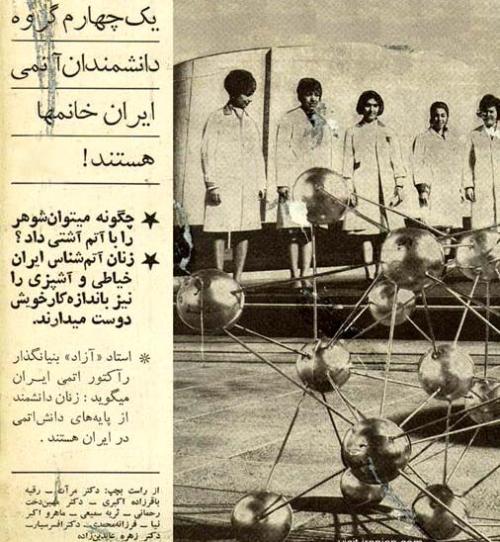
Iranian newspaper clip, 1968 which reads: “A quarter of Iran’s Nuclear Energy scientists are women.” The picture shows five female Iranian PhDs posing in front of Tehran’s research reactor.


Pumping air through a bed of sand can make the grains behave just like a liquid. This process is called fluidization. Air introduced at the bottom of the bed forces its way upward through the sand grains. With a high flow rate, the space between sand grains gets larger, eventually reaching a point where the aerodynamic forces on a grain of sand equal gravitational forces. At this point the sand grains are essentially suspended in the air flow and behave like a fluid themselves. Light, buoyant objects – like the red ball above – can float in the fluidized sand; heavier, denser objects will sink. Fluidization has many useful properties – like good mixing and large surface contact between solid and fluid phases – that make it popular in industrial applications. For a similar (but potentially less playful) process, check out soil liquefaction. (Image credits: R. Cheng, source; via Gizmodo; submitted by Justin)



Have you ever wondered just how detergents are able to get grease and oil off a surface? This simple example demonstrates one method. In the top image, a drop of oil sits attached to a solid surface; both are immersed in water. An eyedropper injects a surfactant chemical near the oil drop. This lowers the surface tension of the surrounding water and allows the mixture to better wet the solid. That eats away at the oil drop’s contact with the surface. It takes awhile – the middle animation is drastically sped up – but the oil droplet maintains less and less contact with the surface as the surfactant works. Eventually, in the bottom image, most of the oil drop detaches from the surface and floats away. (Image credits: C. Kalelkar and A. Sahni, source)
-
 cara-linea reblogged this · 6 years ago
cara-linea reblogged this · 6 years ago -
 foxxymagic reblogged this · 6 years ago
foxxymagic reblogged this · 6 years ago -
 foxxymagic liked this · 6 years ago
foxxymagic liked this · 6 years ago -
 worm-in-the-earth liked this · 6 years ago
worm-in-the-earth liked this · 6 years ago -
 wheresarizona liked this · 6 years ago
wheresarizona liked this · 6 years ago -
 animeluver812 reblogged this · 6 years ago
animeluver812 reblogged this · 6 years ago -
 animeluver812 liked this · 6 years ago
animeluver812 liked this · 6 years ago -
 inattentivecatlady liked this · 6 years ago
inattentivecatlady liked this · 6 years ago -
 gucci-depressione liked this · 6 years ago
gucci-depressione liked this · 6 years ago -
 beardedgiverfun reblogged this · 6 years ago
beardedgiverfun reblogged this · 6 years ago -
 aviofavalon liked this · 6 years ago
aviofavalon liked this · 6 years ago -
 drsloppysawbonesmd reblogged this · 6 years ago
drsloppysawbonesmd reblogged this · 6 years ago -
 drsloppysawbonesmd liked this · 6 years ago
drsloppysawbonesmd liked this · 6 years ago -
 wgxcioo718czr liked this · 6 years ago
wgxcioo718czr liked this · 6 years ago -
 supreme-overlord-bubbles liked this · 6 years ago
supreme-overlord-bubbles liked this · 6 years ago -
 ai-higurashi liked this · 6 years ago
ai-higurashi liked this · 6 years ago -
 a-golden-bear liked this · 6 years ago
a-golden-bear liked this · 6 years ago -
 mcgrobling reblogged this · 6 years ago
mcgrobling reblogged this · 6 years ago -
 they-see-me-rolling-dice liked this · 6 years ago
they-see-me-rolling-dice liked this · 6 years ago -
 a-phantasmagorical-valkyrie liked this · 6 years ago
a-phantasmagorical-valkyrie liked this · 6 years ago -
 wiwoadji liked this · 6 years ago
wiwoadji liked this · 6 years ago -
 spindlewig liked this · 6 years ago
spindlewig liked this · 6 years ago -
 thee-sweetest-nectar liked this · 6 years ago
thee-sweetest-nectar liked this · 6 years ago -
 all-stars-shining reblogged this · 6 years ago
all-stars-shining reblogged this · 6 years ago -
 all-stars-shining liked this · 6 years ago
all-stars-shining liked this · 6 years ago -
 wastingwastedtime liked this · 6 years ago
wastingwastedtime liked this · 6 years ago -
 new-outset liked this · 6 years ago
new-outset liked this · 6 years ago -
 xstarfirekory liked this · 6 years ago
xstarfirekory liked this · 6 years ago -
 somethingmissingthiswaycomes reblogged this · 6 years ago
somethingmissingthiswaycomes reblogged this · 6 years ago -
 kukwee liked this · 6 years ago
kukwee liked this · 6 years ago -
 just-that-sea-serpent liked this · 6 years ago
just-that-sea-serpent liked this · 6 years ago -
 shinyyellowsunshines reblogged this · 6 years ago
shinyyellowsunshines reblogged this · 6 years ago -
 drearydaffodil liked this · 6 years ago
drearydaffodil liked this · 6 years ago -
 burnbouquetbarba-blog reblogged this · 6 years ago
burnbouquetbarba-blog reblogged this · 6 years ago -
 burnbouquetbarba-blog liked this · 6 years ago
burnbouquetbarba-blog liked this · 6 years ago -
 themissdreamingstories liked this · 6 years ago
themissdreamingstories liked this · 6 years ago -
 1-1-s1ay-2-2 liked this · 6 years ago
1-1-s1ay-2-2 liked this · 6 years ago -
 4thena4 reblogged this · 6 years ago
4thena4 reblogged this · 6 years ago -
 4thena4 liked this · 6 years ago
4thena4 liked this · 6 years ago -
 butteryunlikelylady reblogged this · 6 years ago
butteryunlikelylady reblogged this · 6 years ago -
 madlenfireknight liked this · 6 years ago
madlenfireknight liked this · 6 years ago -
 xxloakins217xx liked this · 6 years ago
xxloakins217xx liked this · 6 years ago -
 dice-foxgirl liked this · 6 years ago
dice-foxgirl liked this · 6 years ago